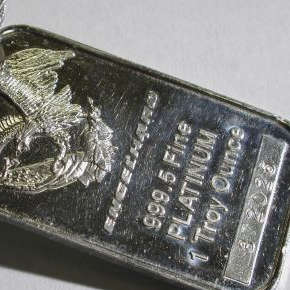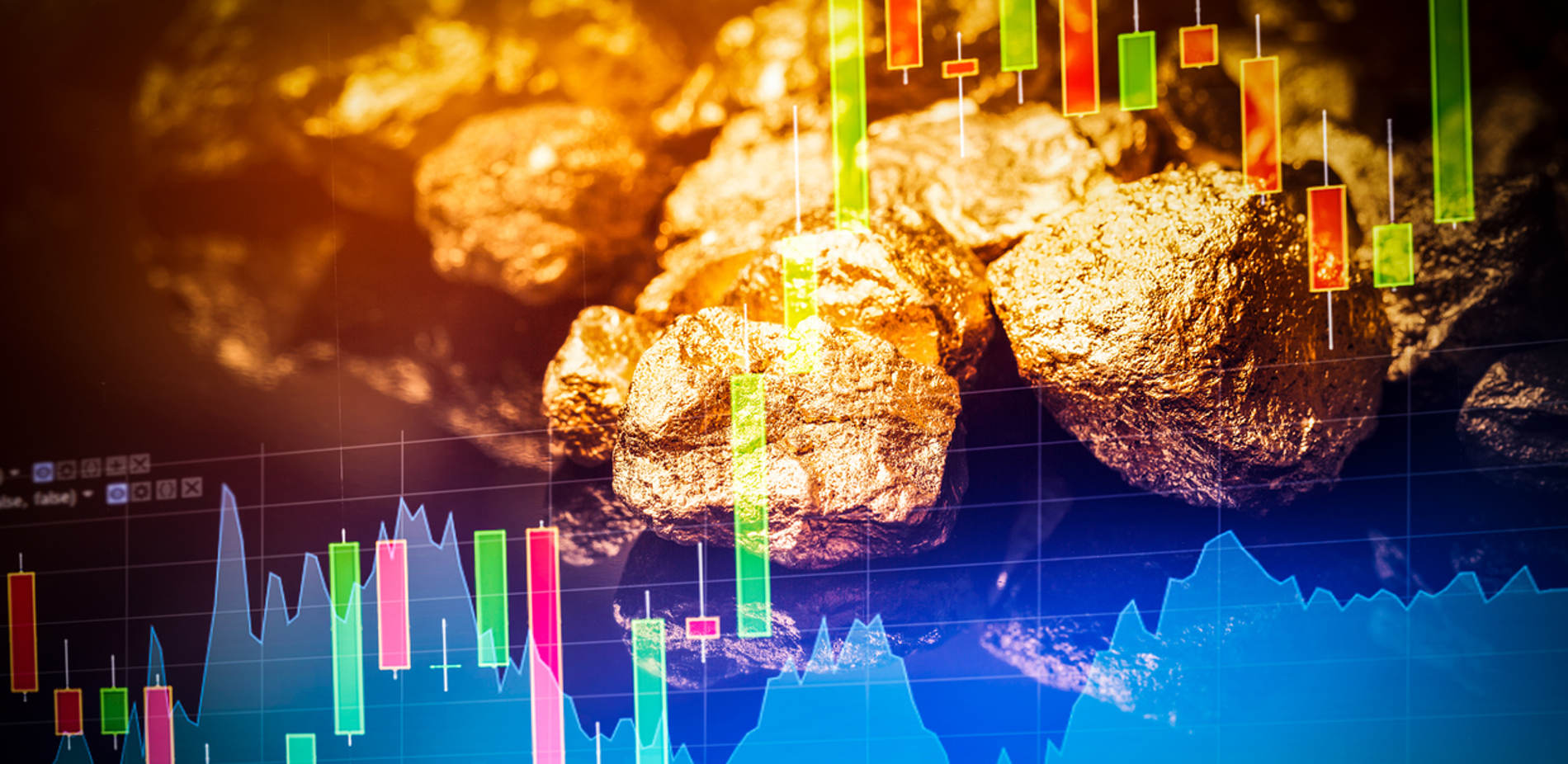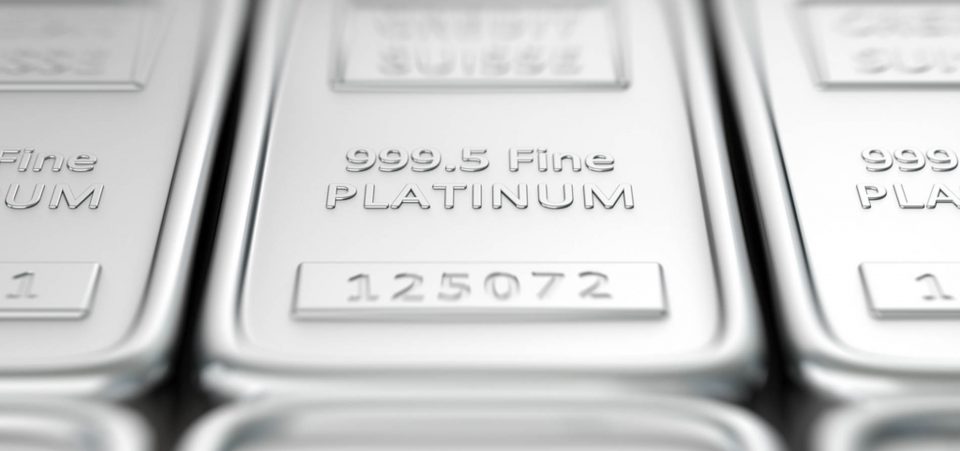Catalysts Galore Should Help Propel Platinum Price Forecast 2017 Higher
Platinum continues its low profile, but investors seeking outsized returns may want to dig a little deeper. Gold is known as the king of metals, but versatile platinum is fully entrenched in the king’s court. If continued negative supply dynamics persist, the platinum price forecast for the next three months may see its rightful time on the throne in 2017.
In the realm of precious metals (PM), there are scant options to choose from. Gold and silver are the obvious ones that spring to mind, but what else? The only other precious metals with an ISO 4217 currency code are platinum and palladium, while the latter is identical to platinum in many ways. With such a small selection of precious metals on the marketplace, it’s amazing that platinum’s profile is so benign. It has history as a store of value, dual industrial/PM utility, and it plays a critical function in today’s transportation sector…amazing.
However, the platinum price outlook 2017 is set to steal the limelight at any time, as extremely tight supply permeates the market.
Also Read: Gold Price Forecast 2017
Chief among platinum price forecast 2017 catalysts are the tight supplies which have gripped the market for several years. The platinum market is likely to be in deficit by 250,000 ounces annually over the next five years if current trends persist. Mine supply is likely to be 5.7 to 5.9 million ounces annually for the next five years, with far more potential for downside risk than upside potential. This should provide a constant floor for price as substitutions are not easily found.
Speaking on mine supply, that’s always in question, with most of it emanating from politically unstable African countries. In fact, about 70% of the entire platinum supply comes from South Africa alone, and political turmoil is on the rise. All it takes is one major strike to set prices off. This scenario happened in mid-2016, when the price rose sharply during wage negotiations, with one of South Africa’s biggest miners. A crisis was averted, but platinum exploded 12.7% in July 2016 alone, far outpacing gold during that stretch. These types of events are unpredictable, but should always be prevalent in investors’ minds. Gold and silver do not command this risk premium.

Credits: Flickr.com/Mrs Pugliano
Also Read: Precious Metal Analysis: Keep Gold and Silver on Your Radar in 2017
On the demand side, growth is far from gangbusters. However, it doesn’t need to be with the six-figure-ounce yearly constraints described above. If we consider all sources of demand, then recycling growth suggests that total platinum supply could grow at a compound annual growth rate (CAGR) of between 1.1% and 1.2% from 2015 to 2021, assuming that metal prices stay somewhat robust. (Source: “Forecasting platinum supply and demand January 2016,” Glaux Metal, last accessed April 4, 2017.)
This growth is not the sexy kind that equity investors are accustomed to. There’s no super-amazing scenario where demand busts out (on the industrial side) to exceed market expectations. Platinum doesn’t work that way.
But in a world where investors are diversifying into non-fiat assets of all types, platinum does offer growing investment demand potential, along with its steady industrial usage rates. Similar to the equity markets appreciating due to valuation expansion, the future of platinum prices can also depend on whether its investment demand profile expands, which certainly may be possible.
While platinum demand is most often associated with the European car industry, a little-known facts is that Chinese consumer demand accounts for 20% of the market. Over the last five years, the largest contributor to demand (20%) has stemmed from Chinese jewelry demand. Although China’s economy is slowing at the moment, providing a headwind for demand, consumers are diversifying out of the yuan as fast as they can. Average Chinese consumers see the economic disaster looming in their country, and are buying hand-over-fist anything which will buffer against the falling yuan.
The incredible rise of Bitcoin is one example of such consumer-fueled demand, and gold continues to be a cultural favorite. Ethereum is in the same category. There are simply too many fiat dollars chasing not enough proven alternative stores of value in today’s world. Platinum is looking to expand its base.
Platinum jewelry demand in India is smaller, but is on the upswing, as governments attempt to suppress gold imports and contract the money supply. Jewelry in India is not just cosmetic; it’s a wealth preservation vehicle and medium of exchange. Of course, gold remains the dominant jewelry metal there, but a concerted marketing effort to build platinum’s brand and availability has been successful. Platinum is slowly paper-cutting into gold’s monopoly in the marketplace. With this trend intact, global jewelry demand will be positively accretive to industrial demand.
Platinum Price Forecast and Analysis for Q2 2017
Now that we’ve discussed some of platinum’s long-term catalysts, are there any near-term catalysts in Q2 to propel price? As always, when talking about near-term price projections, sector performance takes precedent. Long-term factors may drive platinum prices in 2017 and beyond, but not necessarily in Q2.
However, if the first quarter is any indication, Q2 could be looking quite solid.
Platinum prices gained around $50.00/ounce for the quarter, which projects to an annualized return of 25% if platinum price trends keep shape. Gold did even better, finishing up around eight percent for the quarter or $105.00/ounce. This pushed the platinum/gold ratio to ultra-low spreads, at around 0.7, which makes platinum very cheap by historical standards.
Distribution of Pt-Au Ratios and Would-Be Platinum Prices in 2017 if Ratio Normalized
|
Ratio |
% of Months | Platinum Price at Ratio (Current $) |
| 0.70-0.85 | 4.7 | $878- $1,066 |
| 0.85-1.00 | 15.0 | $1,066- $1,255 |
| 1.00-1.25 | 34.7 | $1,255- $1,569 |
| 1.25-1.50 | 19.3 | $1,569 – $1,882 |
| 1.50-2.00 | 15.4 | $1,882 – $2,510 |
| 2.00-2.50 | 8.9 |
$2,510 – $3,137 |
(Source: “The 46-Year Record of Platinum-Gold Ratios,” Kitco, February 28, 2017.)
When ratios are very low, some choose to buy platinum instead of gold. At these levels, the downside in platinum prices is almost entirely related to a cyclical move lower in precious metals themselves.

Credits: Flickr.com/The InfoStrides
If the platinum/gold ratio were to normalize to the low end of its most common range, the platinum price forecast would call for USD$1255 (as of this writing), at par with gold. Should the spread even normalize to 0.85, which it has only historically traded at about five percent of the time, platinum prices would jump to $1,066.75/ounce from $959.00/ounce today. While the days of ratios 1.25 and above are probably over, a normalization towards “1.00” is a distinct possibility over the longer term. This is the kind of “risk-free” premium savvy investors may expect just by mean reversion to do its thing.
The platinum/silver ratio is also flashing some bullish buying signals. The current ratio is 57.72, which is well off the all-time high of 151.28 set in 2003. While not quite at gold’s nosedive levels, the ratio is only about 15% of the all-time low and historically at favorable levels to purchase.
Investors should note the investment price mark-up to buy or sell platinum is two to three times higher than for gold, so there’s an additional transaction cost to think about before forging ahead. There are relatively few cost-effective investment vehicles to invest in beside physical bullion itself, unless one chooses to invest in platinum stocks like Sibanye Gold Ltd (ADR) (NYSE:SBGL) or Wellgreen Platinum Ltd (TSE:WG). This introduces other risks to the equation, however it also gives leveraged exposure to increasing (or decreasing) platinum prices. Furthermore, almost all of these miners are exposed to other base metal production, so exposure to pure play platinum prices is hedged.
Platinum Price Forecast for Next 3 Months
In times of geopolitical or economic instability, platinum tends to trade like a precious metal. With an over-inflated stock market, massive geopolitical uncertainty, global trade uncertainty and many other catalysts, these issues should be the price driver over the next three months, and possibly over the next couple of years. There’s a litany of issues which can propel the precious metals complex in unison, and the odds are with platinum ratios deeply suppressed, the ratio normalizes as opposed to breaking down further.
Black swan events can’t be predicted—investors sometimes forget that fact. The reason to hold precious metals is to protect yourself from the unforeseen, which can break out at any time.
As such, we expect the platinum ratio to normalize towards the bottom end of 0.85-1.0 platinum/gold ratio and investors to reap the $100.00 risk premium over time. Our platinum price forecast calls for the eight-percent gain platinum produced in Q1 to continue in Q2, onwards to perhaps 25% aggregate gains in 2017.






